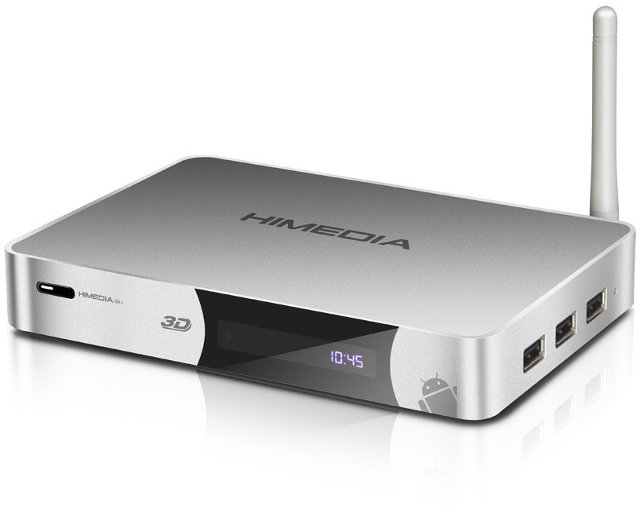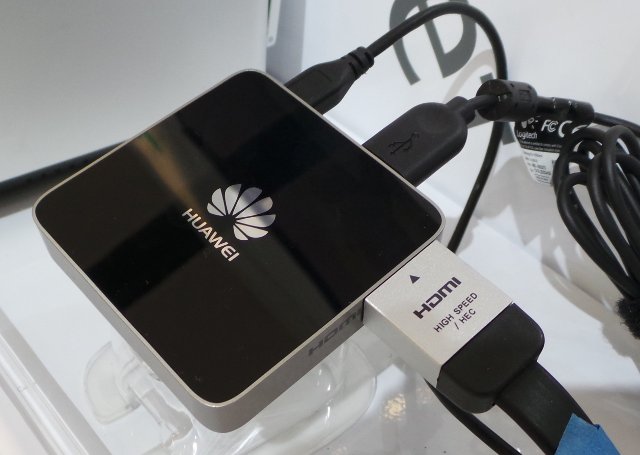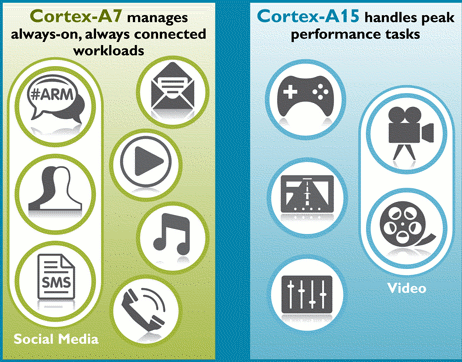This release includes Linux Kernel 3.12 (baseline), Linux Kernel 3.10.20 (LSK), Android 4.4 for the first time, and Ubuntu Linaro 13.11 (still based on Raring). Beside Android Kit Kat support, other noticeable updates include initial documentation for LAVA, and further work on ARMv8 support. Here are the highlights of this release: Android Engineering Android 64-/32-bit updated to 4.4 KitKat Fastboot/UEFI – Created Fastboot app design Builds and Baselines Linaro Stable Kernel 3.10.20-2013.11 released – Includes an updated big.LITTLE MP patchset Linux Linaro 3.12-2013.11 released: gator version 5.16 (same version as in 13.10 release) updated big-LITTLE-pmu, iks, iks-cpufreq, and interactive-gov-updates topics from ARM LT updated basic Capri board support from Broadcom LT (generic phy support for USB, watchdog, updated bcm_defconfig) updated big endian topic updated topic to support K3V2 board from Hisilicon LT updated Versatile Express patches from ARM LT vexpress64 support (updated FVP Base model files, added support for FVP […]
HiMedia Q5II Android STB Features HiSilicon Dual Core SoC, a 2.5″ SATA HDD Bay, and Supports XBMC Hardware Decode
Many Android set-top boxes are based on application processors mainly targetting tablets such as Rockchip RK3188, and media capabilities including video quality, and audio pass-through are not always optimal, or not working at all. On the contrary, HiMedia Q5II, an Android 4.2 media player, is powered by HiSilicon 3718 (or is it Hislicon 3716C V200?), a dual core Cortex A9 SoC designed specifically for media players. It also features an external SATA slot, HDMI and composite video output, optical and coaxial S/PDIF, and I’ve just found out the company worked on making video hardware decoding work with XBMC. HiMedia Q5II specifications: SoC – HiSilicon Hi3716C V200 dual core ARM Cortex A9 @ 1.6GHz + ARM Mali-400MP4 GPU. N.B.: HiMedia indicates the processor is Hi3718, but most resellers give specifications with a dual core processor called 3716C… Hi3718 is not listed at all in HiSilicon website, and Hi3716C is a single […]
Linaro 13.10 Release with Linux Kernel 3.12 and Android 4.3
Linaro has just posted a blog entry to announced Linaro 13.10 was available for download. This is normally supposed to occur on the last Thursday of the month, but it’s possible the release occurred on scheduled, and the blog post was late, or it may have been delayed because of Linaro Connect US 2013. You can access a summary of the event together with slides and videos of the sessions and keynotes when available. This release includes the Linux Kernel 3.12-rc5 (staging), Kernel 3.10.14 (LSK), Android 4.3.1, and Ubuntu Linaro 13.10 (still based on Raring). Android has been ported and updated to 4.3.1 from AOSP, and the OS can now boot using UEFI. More work has been done on ARM 64-bit (aka ARMv8 or Aarch64) for Android, the Linux kernel, and tools such as uprobes, o-profile, and ftrace. Some new hardware platforms I may have missed before have popped up […]
Huawei MediaQ M310 Is Now Available For Purchase
Huawei MediaQ M310 is a media player based on Hisilicon K3V2 quad core SoC, the company unveiled at CES 2013. The company expected the product to be released in Q3 2013 (about now), and the good news is that it has started to pop-up on Aliexpress for $109 including shipping. The bad news is that the only seller has no feedback at all, so you take an extra risk if you buy right now, and I’m sure it will show up in more places in the days or weeks ahead. Let’s remind us of the specifications: SoC – Hisilicon K3V2 Quad-core Cortex A9 processor with Vivante GC4000 GPU System Memory – 1GB RAM Storage – 4GB Flash + microSD card slot Video I/O – 1x HDMI In,1x HDMI Out Audio I/O – HDMI, SPDIF, 3.5mm stereo jack, Mic mono USB – 2x USB 2.0 (1 extension from Y cable) + […]
Linaro 13.07 Release With Linux Kernel 3.10.1 and Android 4.2.2
Linaro 13.07 has been released with Linux Kernel 3.10.1 (both baseline and stable versions), and Android 4.2.2. It’s summer time, so activity seems to have slowdown a bit, yet improvements have done to LAVA with the first LAVA Multi-purpose Prove (LMP) setup, and Linaro has released build with Linux 3.10.1, Ubuntu Raring, OpenEmbedded (ARMv8), and Android. For the very first time, there’s even an Android 4.2.2 community build for HiSilicon K3V2 hardware (HiSilicon Hi4511 development platform). Here are the highlights of this release: LAVA LAVA Core VExpress A9 test images no longer use the master image’s boot loader Support added for interactive bootloader commands. Support for OpenID / Crowd added for LAVA. LAVA Master images updated on images.validation.linaro.org LAVA Multi-node – Multi-Node support has an initial implementation which can support communication between nodes under test via the use of a GroupDispatcher. LAVA Lab Capabilities – LMP (LAVA Multi-purpose Probe) prototypes […]
Huawei MediaQ M310 Media Player Based on Quad Core K3V2 Processor
I haven’t seen any quad-core set-top boxes on the market (if we exclude some Freescale i.MX6 mini PCs), but this is about to change with Huawei MediaQ M310 media player. The device is based on Hisilicon K3V2 SoC, and comes with 1GB RAM and 4 GB flash. Huawei MediaQ M310 specifications: SoC – HiSilicon K3V2 quad-core Cortex A9 processor with Vivante GC4000 GPU System Memory – 1 GB RAM Storage – 4 GB flash + microSD slot Video I/O – HDMI out and HDMI in Audio I/O – 1x SPDIF, 3.5 mm stereo jack and mic (3-in-1) USB – 2x USB 2.0 host ports Connectivity – Wi-Fi 802.11n & Bluetooth 4.0 Huawei multi-screen (Pushing, mirroring) Content aggregation / Voice Search The box runs a customized version of Android with a user interface designed for the television. CSilie, who tipped me about the MediaQ M310, saw the device at CES 2013, […]
HiSilicon Unveils Quad-Core Cortex A9 K3V2 Processor (Hi3620)
HiSilicon, a subsidiary of Huawei, has unveiled the K3V2 quad-core cortex A9 processor at mobile world congress 2012, Barcelona. The processor comes in two version 1.2 and 1.5 GHz and the company claims the chip delivers 30 to 50 percent more performance than existing quad-core processor including the NVidia Tegra3. This performance boost is apparently possible thanks to a 64-bit memory bus as well as a powerful 16-core GPU (by an unnamed US chip designer) that is at least twice as fast as the competition. The current versions of the chip are manufacturer using TSMC 40 nm low power process, but the company plans to move to 28-nm technology for further power efficiency later this year. They do not use a companion core like the NVidia Tegra 3 to save power, but instead HiSilicon designed an A.I.PS (Artificial Intelligence Power Scaling) Core in K3V2, which can manage cores CPU and […]
ARM Unveils Cortex-A7 and big.LITTLE processing
ARM unveiled the Cortex A7, a new core with higher performance than the Cortex A8 (1.5x) and with 5 times less power consumption. It will be used in conjunction with Cortex-A15 Core and allows big.LITTLE processing where the Cortex A7 (companion core) takes care of the low performance, low power tasks (social network, email, SMS, phone calls) and the Cortex A15 kicks in for high performance tasks such as video processing and gaming. Here’s an excerpt of the Cortex A7 / big.LITTLE processing press release: ARM today announced the ARM® Cortex™-A7 MPCore™ processor – the most energy-efficient application class processor ARM has ever developed, and big.LITTLE processing – a flexible approach that redefines the traditional power and performance relationship. The Cortex-A7 processor builds on the low-power leadership established by the Cortex-A8 processor that is at the heart of many of today’s most popular smartphones. A single Cortex-A7 processor delivers 5x […]






